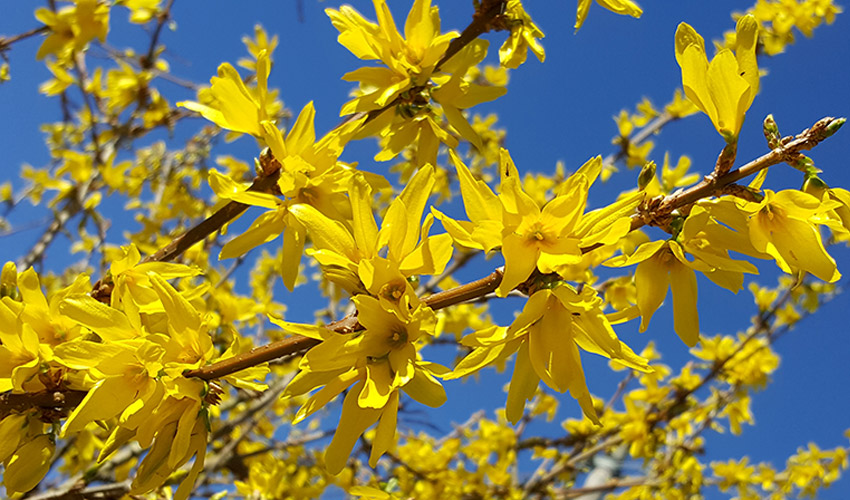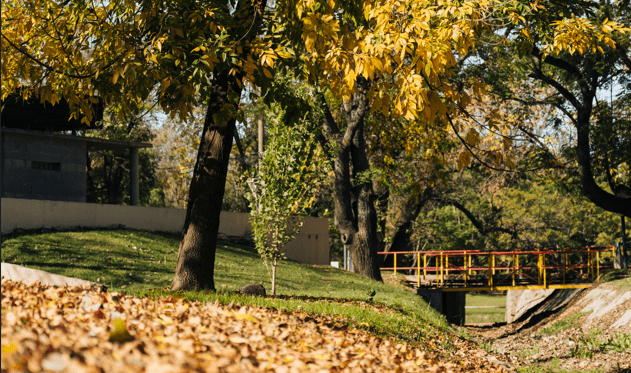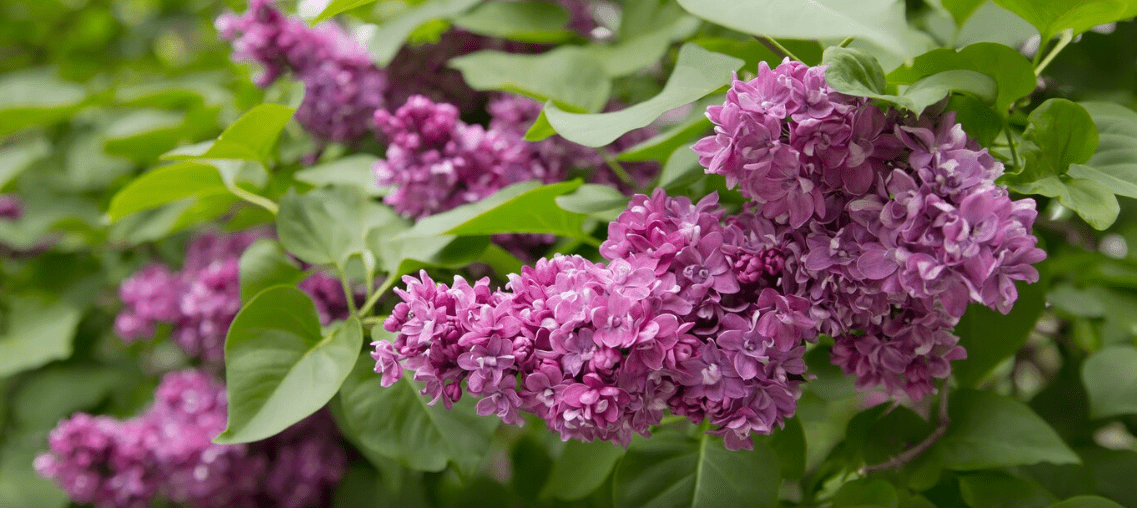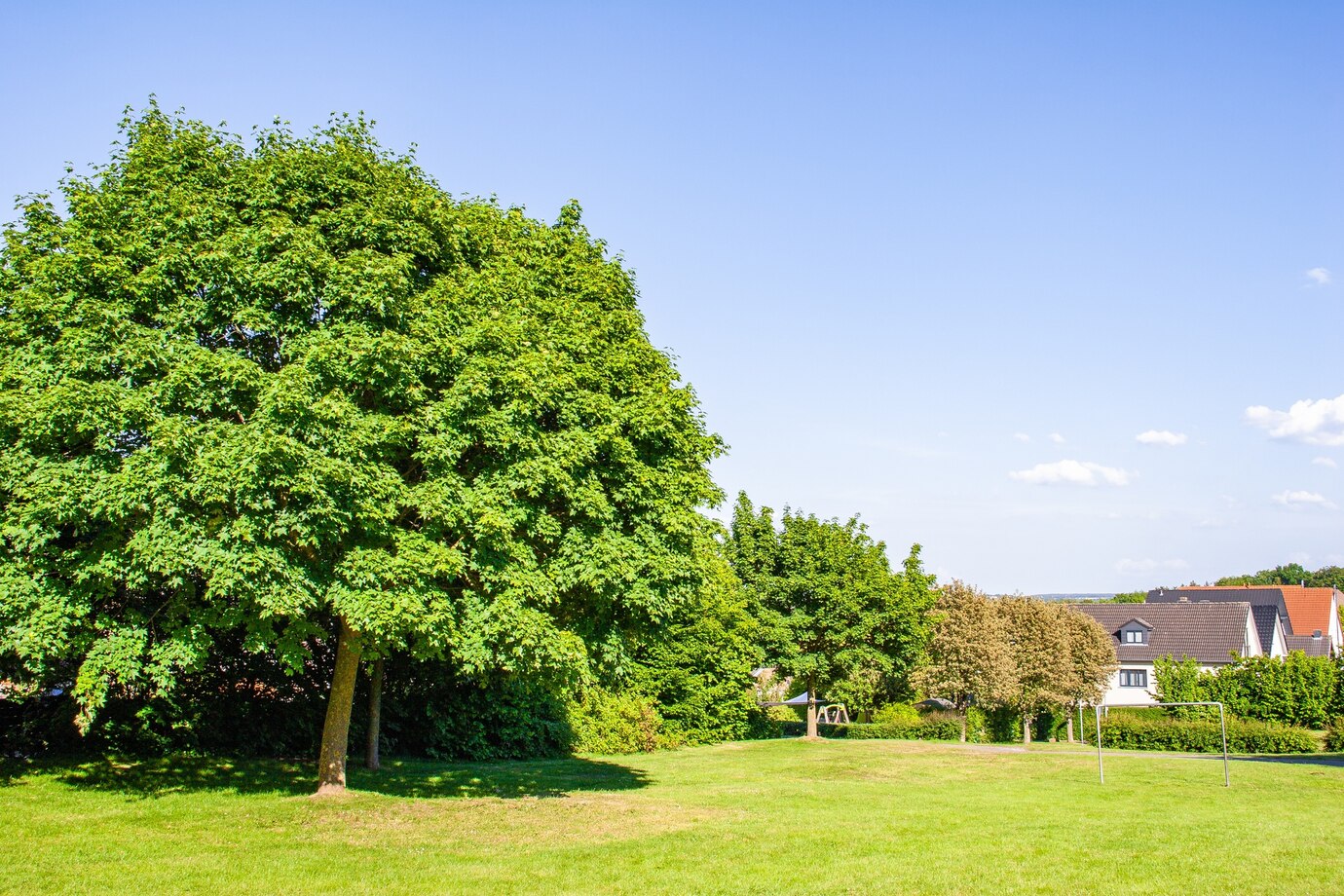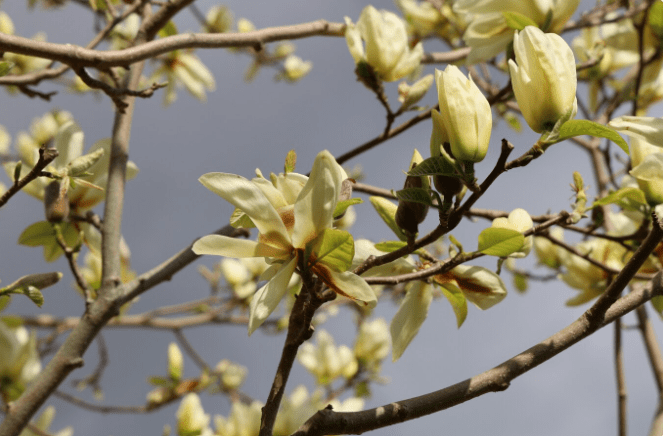Forsythia is a low-maintenance, tough deciduous shrub that brings a burst of bright yellow blossoms to the garden in early spring. Its slender, leafless branches become lined with numerous small, bell-like flowers before the fresh green foliage emerges. While forsythias are great additions to garden edges or borders, their visual appeal is short-lived. Once flowering ends, the plain, twiggy stems and broad leaves offer little decorative value, so it’s best not to place them in highly visible spots. These shrubs grow rapidly and adapt well to different soil types and garden conditions.
Table of Contents
ToggleForsythia Care
Forsythias are quite resilient and can handle poor garden soil. Once established, they also show some resistance to drought. For optimal results, plant them in a location that receives ample sunlight. To care for forsythia, prune regularly to control its size and shape. Or let it grow freely for a more natural, untamed look.
Planting
Select a sunny area with well-draining soil and space each forsythia shrub four to six feet apart to give them room to spread.
The best time to plant is in the fall when the shrubs are dormant. Dig a spacious hole that allows the roots to spread easily. Place the root ball so it’s level with the surrounding ground, then backfill the hole and water deeply to eliminate air pockets.
Light
Forsythia thrives in locations that receive at least six hours of direct sunlight daily. Insufficient sunlight may result in fewer blooms, so choose a sunny spot to help your shrub reach its full flowering potential.
Soil
To care for forsythia effectively, plant it in loose, well-aerated soil that drains easily. These hardy shrubs are surprisingly adaptable and can grow in clay-heavy soils as well. They’re not fussy about soil pH and can do well in both acidic and alkaline conditions. Just make sure the ground isn’t compacted. Improving drainage is key for healthy root development.
Water
Forsythia bushes perform best in evenly moist soil, especially during their early growth stage. Provide newly planted shrubs with regular watering of approximately two inches per week until they become well-established. Once settled, forsythias can tolerate brief dry spells and typically only require watering during extended periods of dry weather.
Temperature and Humidity
These shrubs enjoy mild to slightly humid conditions and grow best in temperatures ranging from 55°F to 70°F. While they’re quite resilient and tolerate cold weather, long stretches of freezing temperatures can reduce or even prevent blooming the following spring. If you live in a colder region, select a variety known for strong cold hardiness to ensure reliable flowering year after year.
Fertilizer
Avoid feeding your forsythia during its first year, as it needs time to settle and strengthen its root system. Once the plant looks healthy and established, typically after one year, you can begin light fertilization. Apply about one cup of granular fertilizer around the base every few weeks throughout spring and summer to support steady growth and vibrant blooms.
Pruning Forsythia
To care for forsythia and keep it looking neat, pruning is key, especially if you prefer a tidy, well-shaped shrub. The best time to trim is right after flowering ends in spring. Avoid cutting back branches after July, as this can remove the buds that would bloom the following season.
Start by removing around one-quarter to one-third of the oldest stems at ground level. This rejuvenates the plant, encourages fresh shoots, and helps maintain a dense, compact structure. You can also thin out some of the younger branches to refine the shape and improve airflow within the shrub.
How to Grow Forsythia From Seed
Not all forsythia shrubs will produce seeds, as many are sterile hybrids. Even if seeds are available, the new plants may not resemble the parent shrub. Additionally, growing forsythia from seed is a slow and labor-intensive process. If you still wish to try, follow these steps:
- Sow a few seeds together in trays or small pots filled with potting mix, spacing each group about 4 to 6 inches apart.
- Cover the seeds lightly with soil—no more than 1/8 inch deep.
- Position the containers in a spot with bright, indirect sunlight.
- Keep the soil consistently moist.
- Once the seeds germinate, remove any plastic covering and water regularly to keep the soil moist.
- Transplant the seedlings into the ground or larger containers in spring, after the last frost has passed.
Potting and Repotting Forsythia
Forsythia grows well in containers, which helps control its vigorous spreading habit. However, it will need repotting every 2 to 3 years as it matures. Here’s how to care for forsythia in pots:
- Select a sturdy container with adequate drainage holes.
- Fill it with a mix of half rich, well-draining soil and half organic matter or compost.
- Place the container in a sunny spot where the plant will receive full sun.
- Keep the soil damp, but avoid allowing it to become overly wet or soggy.
Common Pests and Diseases
Forsythia isn’t affected by many pests. It’s also deer-resistant. However, some diseases can occasionally cause problems.
Watch out for:
- Knobby galls: These swellings may form along the stems and can hinder growth.
- Fungal twig blight: This causes dieback on branches and is more common in humid or overcrowded conditions.
How to manage these issues:
- Prune and remove any affected branches promptly to stop the spread.
- Maintain good airflow by trimming the plant regularly to keep it healthy.
- Use a suitable fungicide if signs of fungal infection appear.

